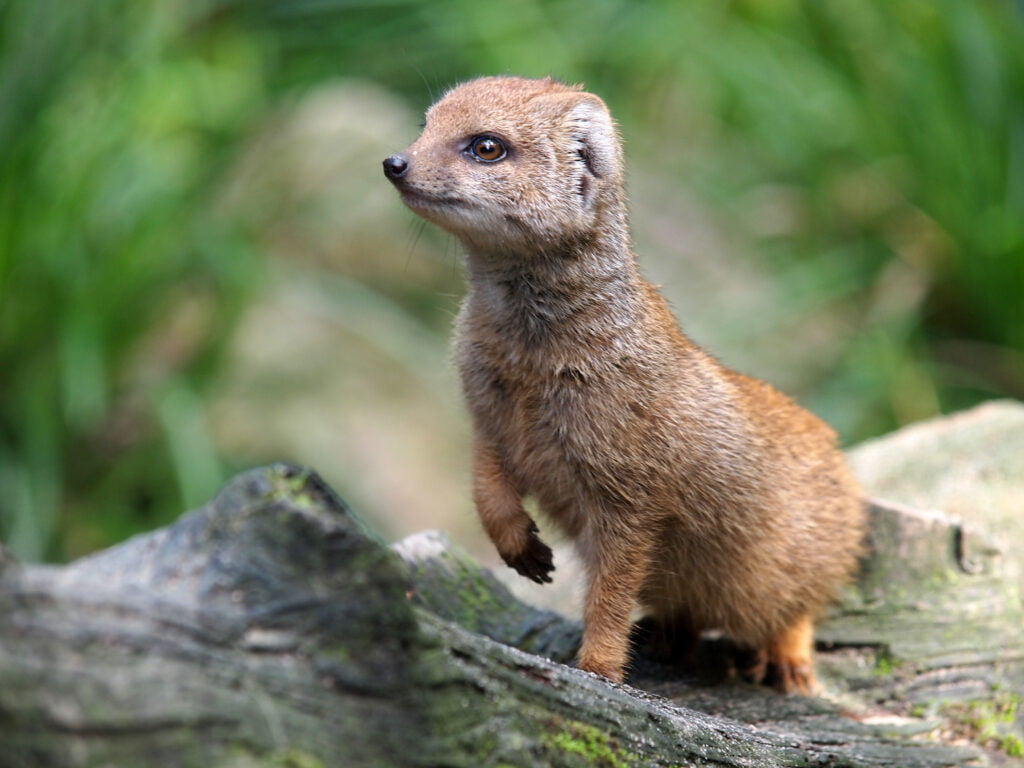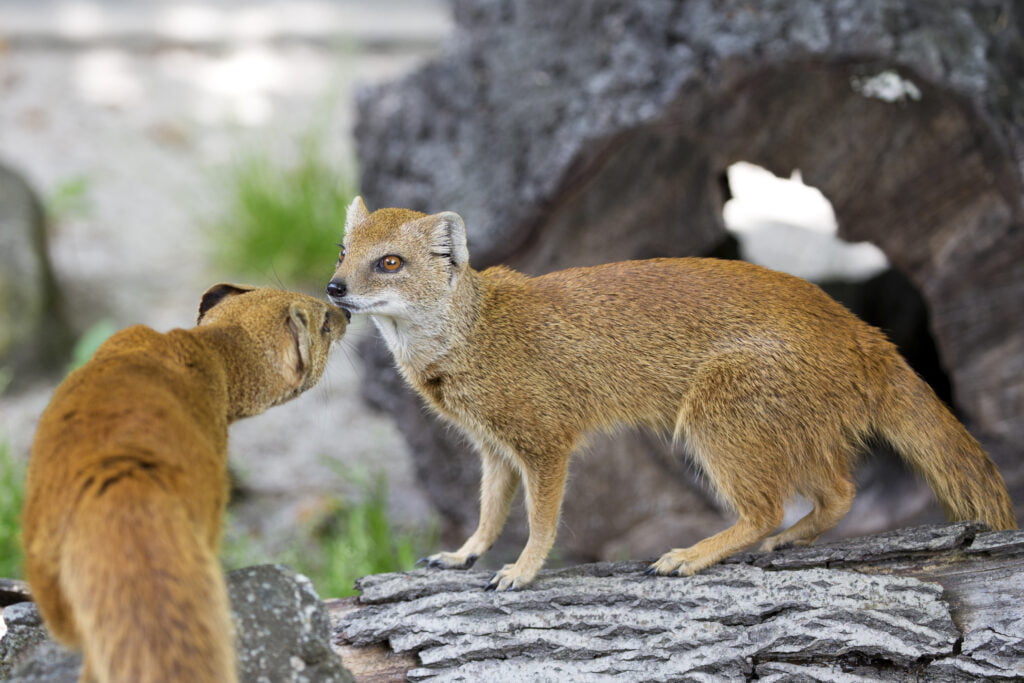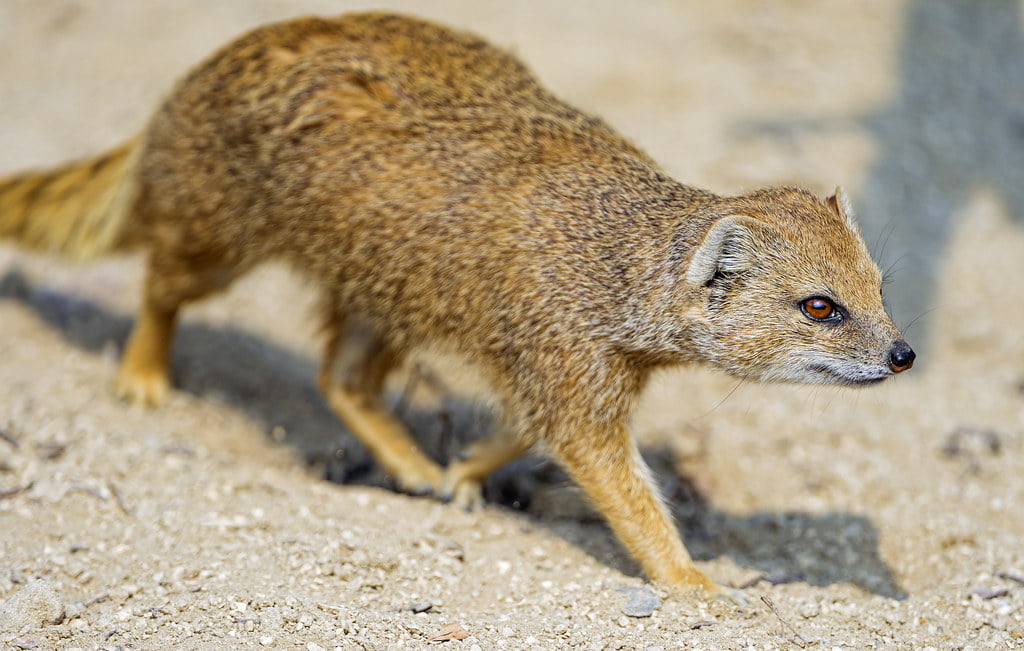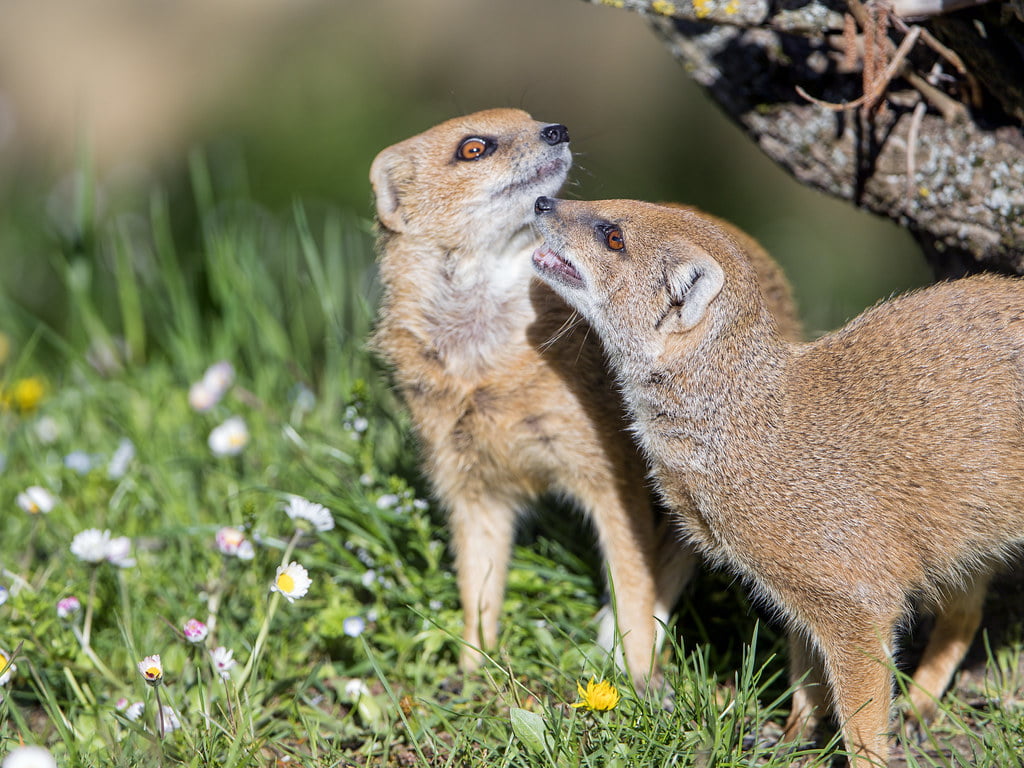Detailed Insights: 14 Fascinating Yellow Mongoose Facts

The yellow mongoose is a small carnivorous mammal found throughout southern Africa. With its bushy tail, rounded ears, and yellowish fur, this creature is a distinctive part of the diverse African wildlife.
The yellow mongoose is the only species in the genus Cynictis. It lives in burrows and is known for its anal scent glands, territorial habits, and ability to kill snakes.
Read on for 14 fascinating facts about this species!

Scientific Classification
Physical Characteristics
Fascinating Facts About the Yellow Mongoose
The yellow mongoose is a small carnivorous mammal found throughout southern Africa. With its bushy tail and yellowish coat, this diurnal creature is a fascinating member of the mongoose family.
If you want to learn more about this cute animal, here are 14 interesting facts about the yellow mongoose:
1. It’s the Only Member of Its Genus
The yellow mongoose, with the scientific name Cynictis penicillata, is the only species within the Cynictis genus. Up to 12 subspecies of yellow mongoose have been identified across different regions of southern Africa. They differ slightly in size, fur color and length, and tail characteristics.
2. Southern Species Have Longer Fur and Tails
There is some variation among yellow mongoose subspecies. Southern subspecies tend to be larger with longer, yellower fur and tails that have a distinctive white tip. Northern subspecies are smaller with shorter grey fur and tails.
3. It Has a Fluffy, Bushy Tail

The yellow mongoose can be identified by its bushy tail, which helps balance the mongoose when it stands upright. The tail typically has black rings and a white tip in the southern subspecies. It uses its tail to communicate, waving it to signal others.
4. They Have Rounded Ears and Pointed Noses
This mongoose has a rounded head with small, rounded ears. It has a pointed snout and a black nose. Its eyes have a rectangular pupil with an additional protective membrane lid.
5. They Have 5 Toes on the Front Feet
Yellow mongooses have five digits on each of their front feet but only four toes on the back feet. The front feet have long, curved claws used for digging burrows.
6. Adults Weigh Up to 1.8 Pounds
These are small mammals, weighing between 16 and 29 ounces as adults. Their bodies grow up to 13 inches long, with the tail adding another 10 inches.
7. Yellow Mongooses Are Diurnal

The yellow mongoose is primarily active during the day (diurnal). They sleep in their underground burrows overnight. In the morning they will sunbathe near burrow entrances before starting their daily foraging.
8. They Live in Colonies and Share Burrows
Yellow mongooses are very social. They live in colonies of up to 20 individuals, sharing a complex network of underground burrows. Multiple females breed within the group. They often share burrows with other species like ground squirrels or meerkats.
9. They Use Anal Glands to Mark Territory
These animals are territorial. The dominant male marks the colony’s territory boundaries using anal gland secretions and urine. He also rubs against objects, leaving hair behind as a visual marker.
10. They Growl When Threatened
Yellow mongooses are usually quiet. But when frightened or angry, they will growl, bark, scream, or emit a high-pitched screech. They also use tail movements to signal warnings.
11. Their Diet Includes Insects, Birds, Lizards, and More

Yellow mongooses are omnivores and opportunistic foragers. Insects like termites and beetles make up most of their diet. They also eat small mammals, birds, eggs, reptiles, and amphibians.
12. Females Give Birth to 2-3 Pups
Mating occurs from July to September. After a gestation period of around 50 days, females give birth to a litter of 2-3 pups in an underground den. The young are weaned by 10 weeks old.
13. They Can Carry Rabies with No Symptoms
Yellow mongooses may carry rabies for years with no symptoms. Their crowded burrow lifestyle promotes transmission among colony members. This makes the species an important rabies reservoir in southern Africa.
14. They Use Latrines Near Their Burrows
Yellow mongooses keep their burrows clean by using latrines. They designate specific areas, usually near burrow entrances, as communal toilet spots. Latrine sites can be identified by their distinct odors.
Key Takeaways
The yellow mongoose is a fascinating small mammal with some remarkable behaviors and adaptations. These social, opportunistic creatures play an important role in their southern African grassland and scrubland ecosystems.






